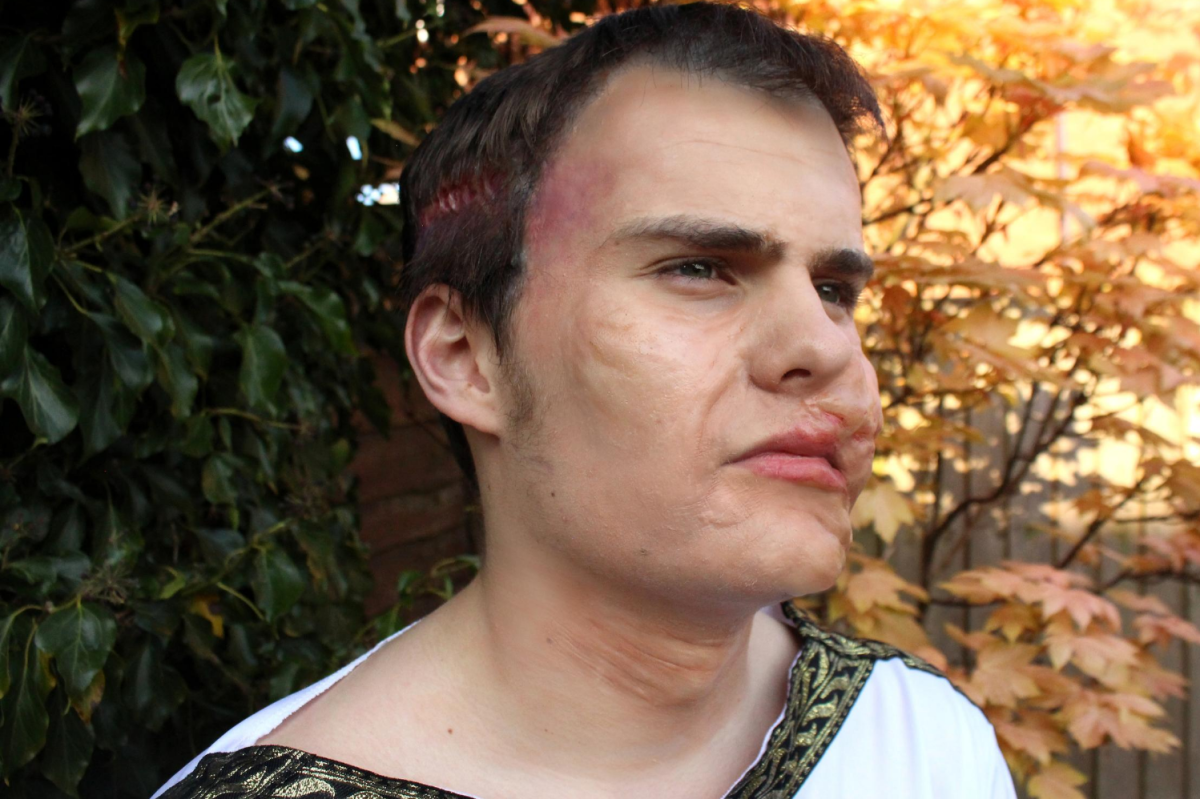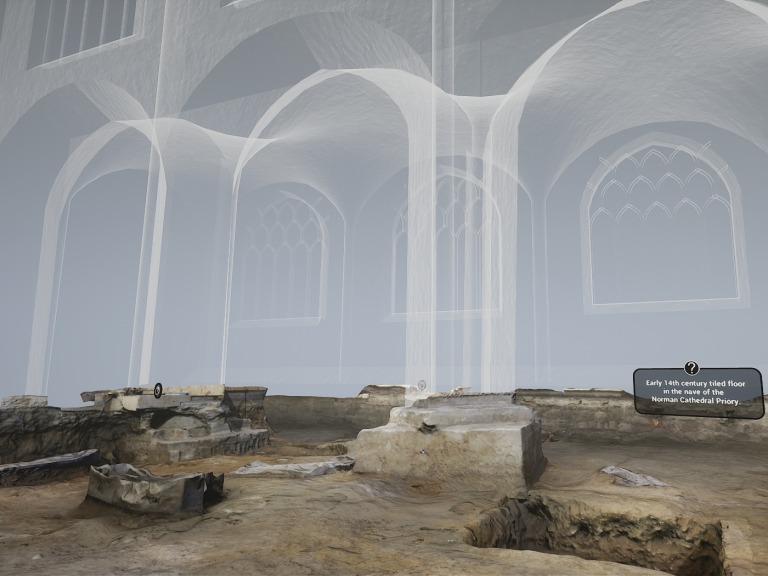When approaching the final project of my degree at Arts University Bournemouth, I wanted to explore a new and exciting path of makeup and prosthetics. Throughout most of my art life, I have found passion in the study of anatomy and how this can be changed through the application of prosthetic makeup. So when the opportunity arose to collaborate with Wessex Archaeology and to ignite these passions - I went for it!
I chose to focus on the Boscombe Down archaeological dig, dating back to the Late Antique Roman Era (around 200-300AD). The primary cases of this dig had injuries to the skull and the mandible – wounds which had almost fully healed by the time they had died. From a prosthetic makeup artist’s stand point, this was exciting for me as it gave me lots of scope to experiment with the healing of these wounds and how this would affect the anatomy through prosthetic makeup. With the cases dating back to the Roman era, it meant that I could focus on the appearance of people from this time and how I could reconstruct this through the means of makeup and hairstyles.
There were a lot of cases to choose from, but I decided to focus on just one case that I could examine in great detail - a male with an incised wound to the mandible and a blunt wound to the right side of his skull. By talking to the Community & Engagement team at Wessex Archaeology, we decided to create a short film depicting what this particular case's daily life may have been like when living with such life changing wounds. Multiple meetings with the leading experts at Wessex Archaeology really informed my knowledge of the anatomy of the case and the likely methods of medicinal practice that may have been carried out on him. We decided that the case may have experienced partial facial paralysis due to the injury to the mandible. The blunt force to the head may have also caused his movements/perceptions to be altered which would affect the function of his day-to-day life. Due to the dating of the case, I could not be completely certain what form the case's appearance and wounds would have taken, but these conclusions seemed right both to me and the crew at Wessex Archaeology.


Prosthetic designs showing the early stages of injury (left) and later healing (right)
We planned to shoot the film at the Roman Villa at Butser Ancient Farm. Alongside Tom Westhead doing the camera and editing work and an actor scouted from the Arts University Bournemouth, we would film over a couple of days, to make certain we got all the footage we needed for the film. We wanted to be able to educate young people on how life was during this era as accurately as possible, so we visited the site to plan out the course of the film and to ensure the props and setting available to us coincided with the storyline.
For me, most of my time was spent designing the makeup and executing the relevant steps to reach an outcome. Once the makeup was designed, I had to sculpt the prosthetics onto a cast of the actor’s face, and then take a cast of the sculpt to form a mould which the prosthetic appliances would then be made from. Alongside this I kept in touch with Wessex Archaeology’s Community & Engagement team, as well as the location administrator at Butser and costume loan companies. It was quite a busy few months!
We had planned to film at Butser in April this year, however, because of Coronavirus, our plans were cut short. With my university closing, I moved home to be with my family. Our deadlines at university were edging closer, so I had to be creative in my next steps to try and execute a final project. Luckily the majority of my prosthetic making process was complete before I moved back home. However, with no actor to apply my prosthetics onto, I had to get creative! I was fortunate that my brother was isolating with me so he could stand in as a model. A few alterations to the costume and we were ready to go.





Prosthetic makeup showing the injuries soon after they were inflicted (top row), and after healing (bottom row)
The images you see are the final applications on my brother. Although not what was initially expected, I was really pleased with the final outcome of these. For the purpose of my university project, where we had to have a context for our final outcome, I created film posters to illustrate how my makeup would have been seen in a film environment.


It’s nice to reflect on these and how they represent the journey I took with this project. I’d like to think that, when we come around to making the short film, these can be used alongside as a form of promotional material. Despite the unprecedented turn my project took, it was a great learning curve and has helped develop my problem-solving skills as an artist ready to enter the industry.
I will be keeping in touch with the Wessex Archaeology team and we will be resuming production of the film when it is safe to do so. I am excited to see where the outcome takes us.
By Hayley Winstanley
See more of Hayley's work on her Instagram profile and website.




